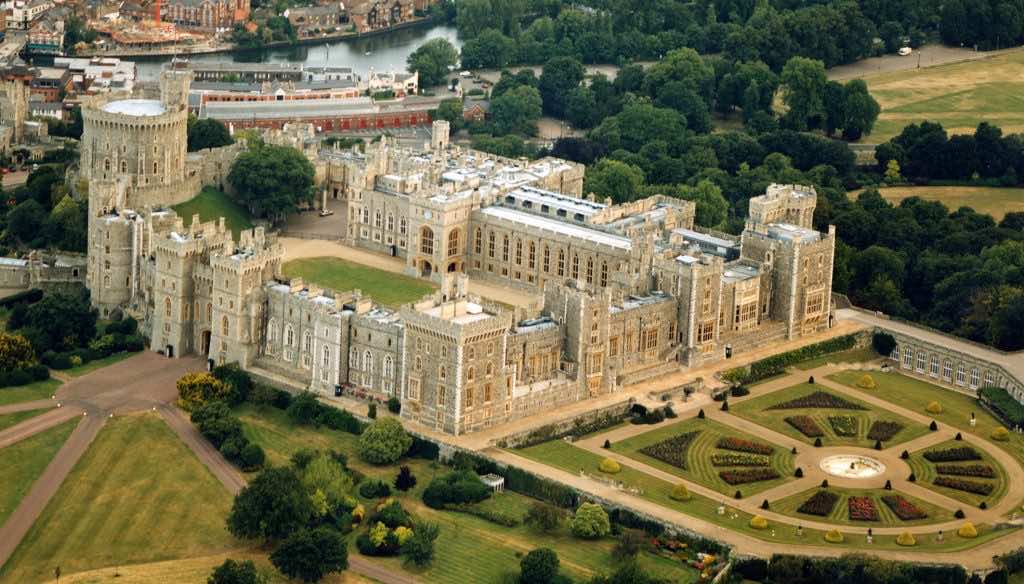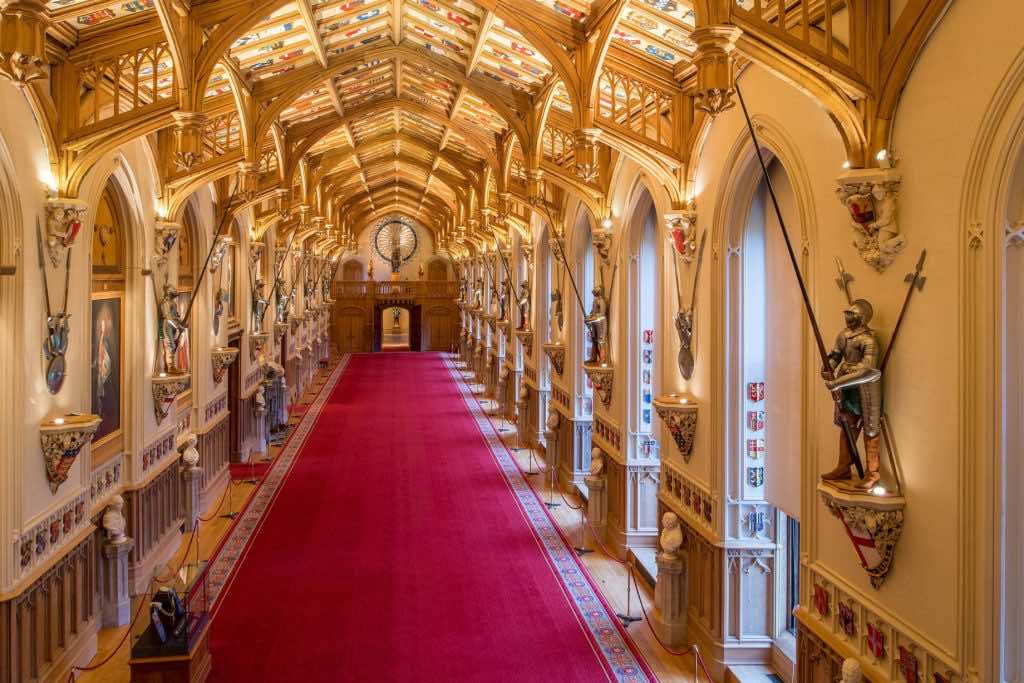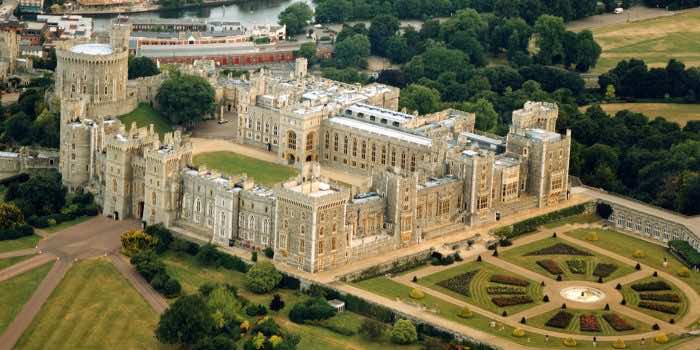Windsor Castle is located at Windsor in the English county of Berkshire, it is the largest inhabited castle in the world and, dating back to the time of William the Conqueror, it is the oldest in continuous occupation. Together with Buckingham Palace in London and Holyrood Palace in Edinburgh, it is one of the principal official residences of the British monarch.

Over its 1,000-year history, the design of Windsor Castle has changed and evolved according to the times, tastes, requirements and finances of successive Monarchs. Nevertheless, the positions of the main features have remained largely fixed. The castle today, for example, remains centred on the motte or artificial hill on which William the Conqueror built the first wooden castle. The Castle has played a role in many significant moments of British history, including the signing of the Magna Carta nearby and its role as a fortress for the Royal family during the blitz in WWII.
In the 12th century, Henry II reconstructed the castle from its small and simple architectural design to a magnificent castle. He replaced the original building with a stone round tower and an outside stone curtain wall to the east, north, and south. By the 13th century, the castle was an established royal residence. Successive kings incorporated their own touches; Henry III added a large tower known as the Curfew Tower, while Edward III added the enormous Norman Gate and the famous St. George’s Hall. The latter is still used today for its original purpose: the Knights of the Order of the Garter, a chivalric order Edward III founded. A highlight of the hall is St. George’s Chapel, which can be visited today and where worship is regularly held.

It is in essence a Georgian and Victorian design based on a medieval structure, with Gothic features reinvented in a modern style. Since the 14th century, architecture at the castle has attempted to produce a contemporary reinterpretation of older fashions and traditions, repeatedly imitating outmoded or even antiquated styles. The interior spaces of the castle, especially the State Apartments, display a curious mix of styles and inspirations, ranging from Classical, Rococo, Gothic and even Jacobethan in places.



